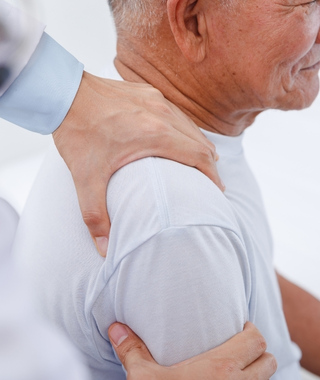
Our ‘no-cracking’ technique
The NeuroImpulse Protocol
When part of your body is stiff, weak or in pain, the team at Cannon Hill Chiropractic are here to help you.
We practise a no-cracking approach to chiropractic care. We use a gentle, low force brain-based technique known as the neuroimpulse protocol.
Understanding how your body works
 The human body is not like a Meccano toy, those metal figures held together by bolts and hinges. If a Meccano figure has a stiff knee, the problem is purely in that area – you’ll simply need to loosen the relevant screw.
The human body is not like a Meccano toy, those metal figures held together by bolts and hinges. If a Meccano figure has a stiff knee, the problem is purely in that area – you’ll simply need to loosen the relevant screw.
Your body is far more complex than that.
Everyone moves and uses their bodies in many dynamic ways. To allow this movement, the body has many interrelated systems that all influence each other. Sometimes this means your pain or reduced function may be felt at a particular location such as your lower neck, but the cause of the pain may actually stem from somewhere else in the body.
Your musculoskeletal system, for example, is intricately linked with your nervous system. Your muscles move and protect your joints. Your nerves send messages to and from your brain. And your brain controls and coordinates your movements, strength, and stability.
So, if you have a stiff knee, it could be for several reasons. Perhaps it’s a biomechanical issue, perhaps it’s referred pain, perhaps it’s the result of compensating after a previous injury.
Whatever’s going on, the difficulties in your knee affect the messages your brain receives from that area. Your brain is still receiving movement information (known as mechanoreception i.e. touch, pressure, stretch) but it’s getting other messages too – damage information known as nociception. When the balance shifts too far towards nociception, you may experience further muscle tightness, weakness, or loss of normal function.
So, how do we break that cycle? That’s where the neuroimpulse protocol comes in.
What is the neuroimpulse protocol?
The neuroimpulse protocol (NIP) is a brain-based chiropractic technique drawn from the disciplines of biomechanics, anatomy, neurology, and pain science. NIP identifies where input from the different joints and muscles of the body needs to be corrected to allow the brain to restore normal movement, strength, and function.

What is an NIP assessment like?
An NIP assessment measures your function by exploring your movement, strength, and reflexes.
You’ll be in a neutral position (sitting down or lying on your front or back) while we gently assess you from head to toe.
If you’ve experienced a loss of normal motion in part of your spine, it can create a pull on the dura resulting in something known as dural tension. The dura is a tough, protective covering around your brain and spinal cord with the outer layer attaching to the inside of your skull and at various points in your spine. When this is added to increased stress signals from the joints (those nociceptive ‘damage’ messages mentioned above) it can further overload your central nervous system. That’s why an NIP assessment always starts with an examination of your upper neck, an area that has a great effect on dural tension.
When the assessment is completed, we move to the treatment phase. We make gentle corrections when you’re in a neutral position. There’s no twisting or force. Just gentle pressure applied in precisely the right spot to unlock and release any pain or discomfort.
What then?
Once you start to experience improved function, the goal of treatment shifts towards helping you gain confidence in your body.
When you’ve struggled with one part of your body, you may have begun telling yourself negative things about your body – that it’s weak and frail or old and broken.
Part of our role is to help you see your body differently – as strong and capable. Once your function improves, you begin to move more easily and grow in confidence. That opens many new possibilities and creates momentum for other lifestyle changes to improve diet, sleep, and exercise habits.
Experience NIP for yourself
If you’re tired of stiffness, soreness, weakness, or limited function, then please come to see us. You can be assured of a warm welcome and care that meets your needs.
Disclaimer
All information is general in nature. Patients should consider their own personal circumstances.
